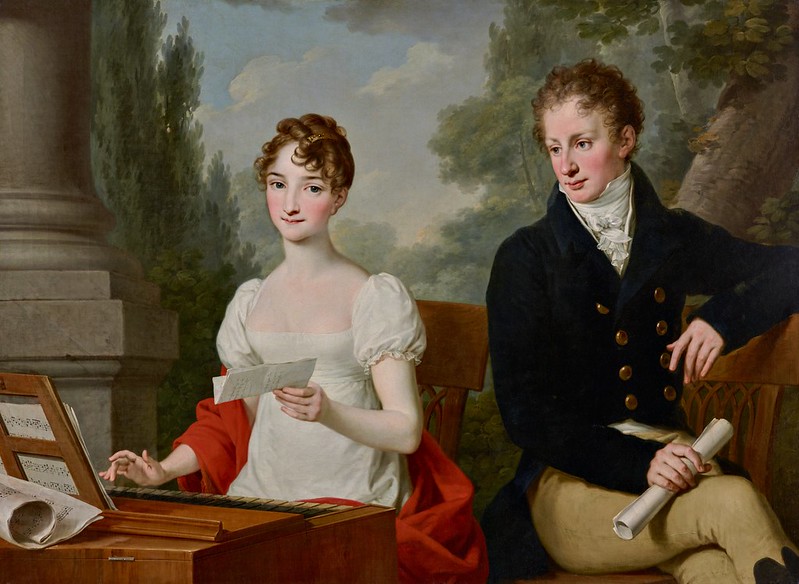Johann Gottfried Eckard (1735-1809)
- Sonata I en Si bémol majeur, Oeuvre I (c.1763)
Performers: Brigitte Haudebourg (fortepiano)
Further info: Johann Gottfried Eckard (1735-1809) - Pianoforte Sonatas
---
German pianist and composer, active in France. In his youth he became a
professional copper engraver and acquired his musical training in his
leisure time, mainly from C.P.E. Bach's Versuch and its six
‘Probesonaten’. In 1758 the piano and organ manufacturer Johann Andreas
Stein took him to Paris, where he lived for the rest of his life. At
first he supported himself by painting miniatures, a craft in which he
apparently possessed considerable skill. He practised the piano in his
free time and quickly developed a great facility. Many successful
concerts soon gained him fame and numerous students. Leopold Mozart
became acquainted with Eckard during his visit to Paris in the winter of
1763-64, and expressed high regard for him. Grimm, in his
Correspondance littéraire, called Eckard ‘the strongest’ of all Parisian
composers, stating that ‘he has genius, the most beautiful ideas, with a
manner of playing full of feeling and an extraordinary lightness’. That
this was not merely a momentary captivation of the Parisian musical
circles is attested by J.-B. de La Borde, who declared in 1780 that
Eckard's execution at the keyboard was ‘the most brilliant and pleasing’
and that ‘he excels particularly at preluding for entire hours making
the time pass as moments for those who listen to him’. Burney gave
further testimony to the high regard felt for him by his contemporaries:
"There are many great German musicians dispersed throughout Europe,
whose merit is little known in England, or even in their native land;
among these is Eckard, who has been fifty years at Paris. This musician
has published but little; yet by what has appeared, it is manifest that
he is a man of genius and a great master of his instrument."
On his death the 'Mercure de France' remarked that he was ‘the most
celebrated harpsichordist of Europe’. Eckard has two claims to
historical significance: he was the first composer in Paris to conceive
keyboard sonatas for the piano, and he foresaw the great vogue the piano
would enjoy several years before this instrument was accepted in the
salons and concert halls of Paris. Unfortunately only three works by him
were published: the six sonatas op.1 (1763), two sonatas op.2 (1764)
and a set of variations (1764) on the ‘Menuet d'Exaudet’. Although the
title-page of op.1 specifies only the harpsichord, Eckard's preface
extends the performance of the work to the piano; and his meticulous
indication of dynamic shadings (e.g. no.6, second movement), a practice
previously unknown in this period, clearly shows his preference for the
latter instrument. Both the piano and harpsichord are specified on the
title-page of his op.2, and the music reveals an even greater
consideration for the idiomatic characteristics of the new instrument.
Eckard's sonatas follow no set pattern with regard to formal
organization: half are in three movements, two consist of only two
movements, and two others are cast in a rather extended single movement
(op.1 nos.4–5). Unlike the sonatas of Eckard's émigré compatriots in
Paris, none calls for accompanying instruments to heighten expression.
The texture is enlivened at times by the contrapuntal involvement of the
left hand; and in an effort to make the accompaniment of greater
musical significance, Eckard did not restrict himself to the Alberti
bass pattern, but used it rather as one of several devices.

Cap comentari:
Publica un comentari a l'entrada